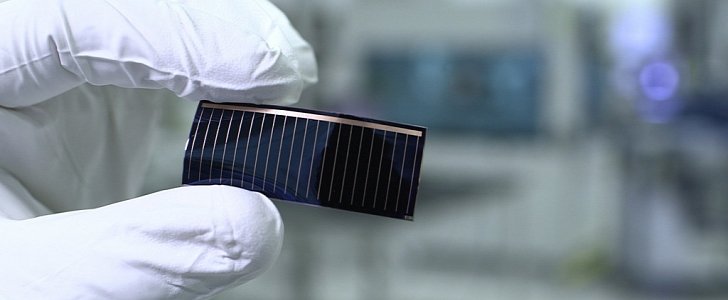As electric vehicles become the flagships of manufacturers worldwide, maximum range is also becoming the new horsepower. Every brand is caught up in a competition to deliver the EV that can run the longest on a single charge, and with such tight margins, every added mile counts.
We've seen Tesla use special wheel caps that all but close the EV's rims for optimal air flow and reduced drag, thus reportedly increasing the maximum range of the new Model 3 by up to 10 percent.
Dealing with air friction in a more efficient way is one method, generating power on the go is another. Previously, that usually meant installing a gas engine that would act as a generator, turning the EV into a range-extended EV. Of course, burning fuel doesn't sit well with the profile of the client that's interested in buying electric, so this solution had limited success.
There's also the option of adding a liquid hydrogen fuel cell to do the same, and this one doesn't burn anything while releasing only clean water into the environment. However, obtaining the liquid hydrogen and having it delivered to the refilling stations is a whole different story.
Finally, there's the option of having the vehicle covered in photovoltaic cells. The solution doesn't have any drawbacks, apart from the fact it can only generate a small amount of electricity plus the tiny inconvenient of forcing the owner to choose between this and a glass roof.
Together with Chinese solar cell specialist Alta Devices, a division of Hanergy, Audi is working on a solution to the former of the two. Reports say the two companies have come up with a translucent solar cell that can capture the energy from the sun and let the light pass at the same time.
Audi will use the power generated by its solar glass roofs to power the vehicle's onboard accessories - things like air conditioning, heated seats, power windows, and so on. It won't have a direct impact on the range, but by relieving the main battery of having to power these features as well, the new see-through solar roofs will help extend the EV's reach.
There is no clear timeline for when the technology will enter production, but Audi says a prototype will be ready by the end of the year. With two battery-powered SUVs in the pipeline for the Ingolstadt manufacturer - the e-tron quattro and the e-tron Sportback - and who knows how many to follow, there will be no shortage of models that could benefit from this new development.
Dealing with air friction in a more efficient way is one method, generating power on the go is another. Previously, that usually meant installing a gas engine that would act as a generator, turning the EV into a range-extended EV. Of course, burning fuel doesn't sit well with the profile of the client that's interested in buying electric, so this solution had limited success.
There's also the option of adding a liquid hydrogen fuel cell to do the same, and this one doesn't burn anything while releasing only clean water into the environment. However, obtaining the liquid hydrogen and having it delivered to the refilling stations is a whole different story.
Finally, there's the option of having the vehicle covered in photovoltaic cells. The solution doesn't have any drawbacks, apart from the fact it can only generate a small amount of electricity plus the tiny inconvenient of forcing the owner to choose between this and a glass roof.
Together with Chinese solar cell specialist Alta Devices, a division of Hanergy, Audi is working on a solution to the former of the two. Reports say the two companies have come up with a translucent solar cell that can capture the energy from the sun and let the light pass at the same time.
Audi will use the power generated by its solar glass roofs to power the vehicle's onboard accessories - things like air conditioning, heated seats, power windows, and so on. It won't have a direct impact on the range, but by relieving the main battery of having to power these features as well, the new see-through solar roofs will help extend the EV's reach.
There is no clear timeline for when the technology will enter production, but Audi says a prototype will be ready by the end of the year. With two battery-powered SUVs in the pipeline for the Ingolstadt manufacturer - the e-tron quattro and the e-tron Sportback - and who knows how many to follow, there will be no shortage of models that could benefit from this new development.

